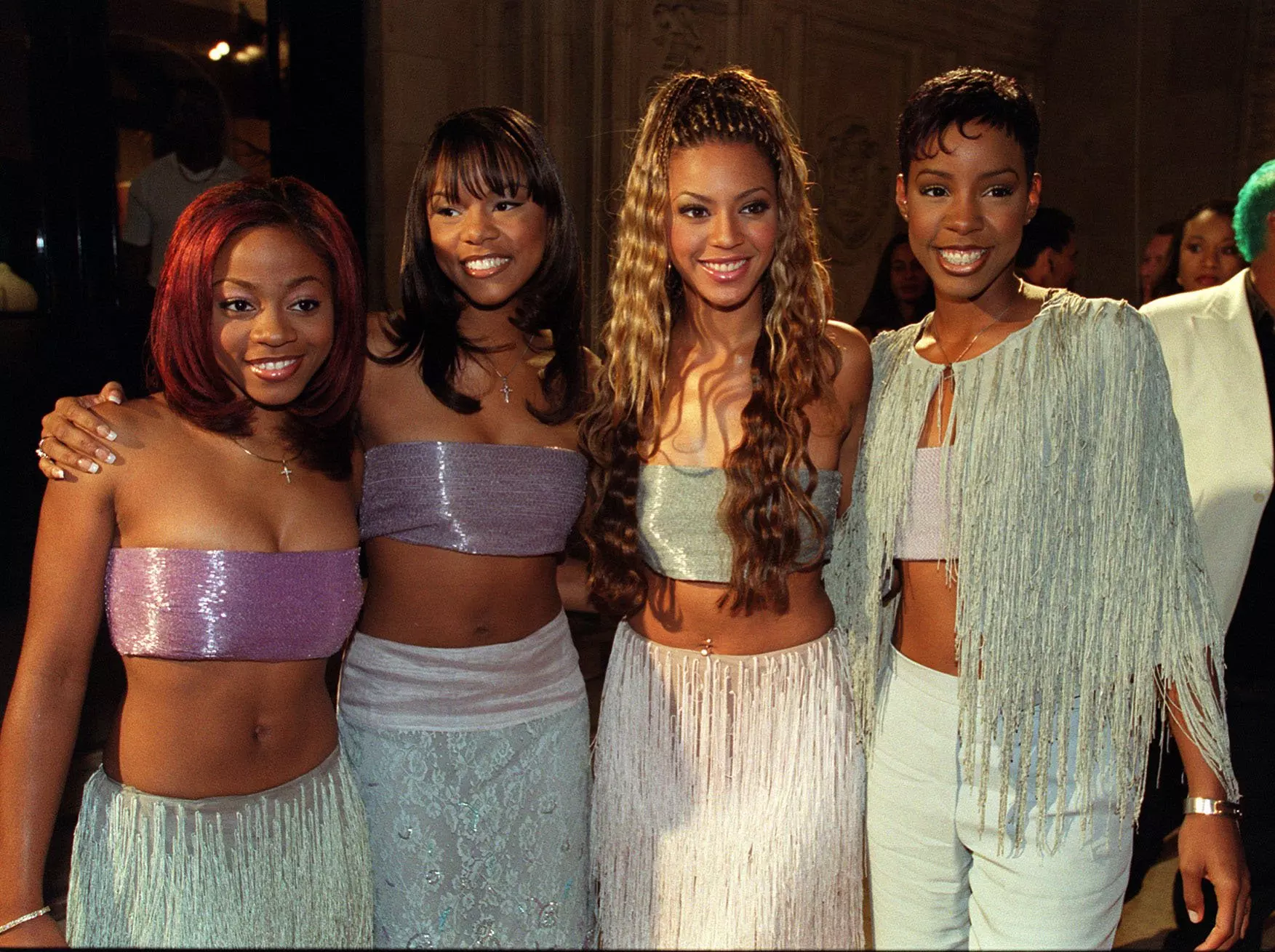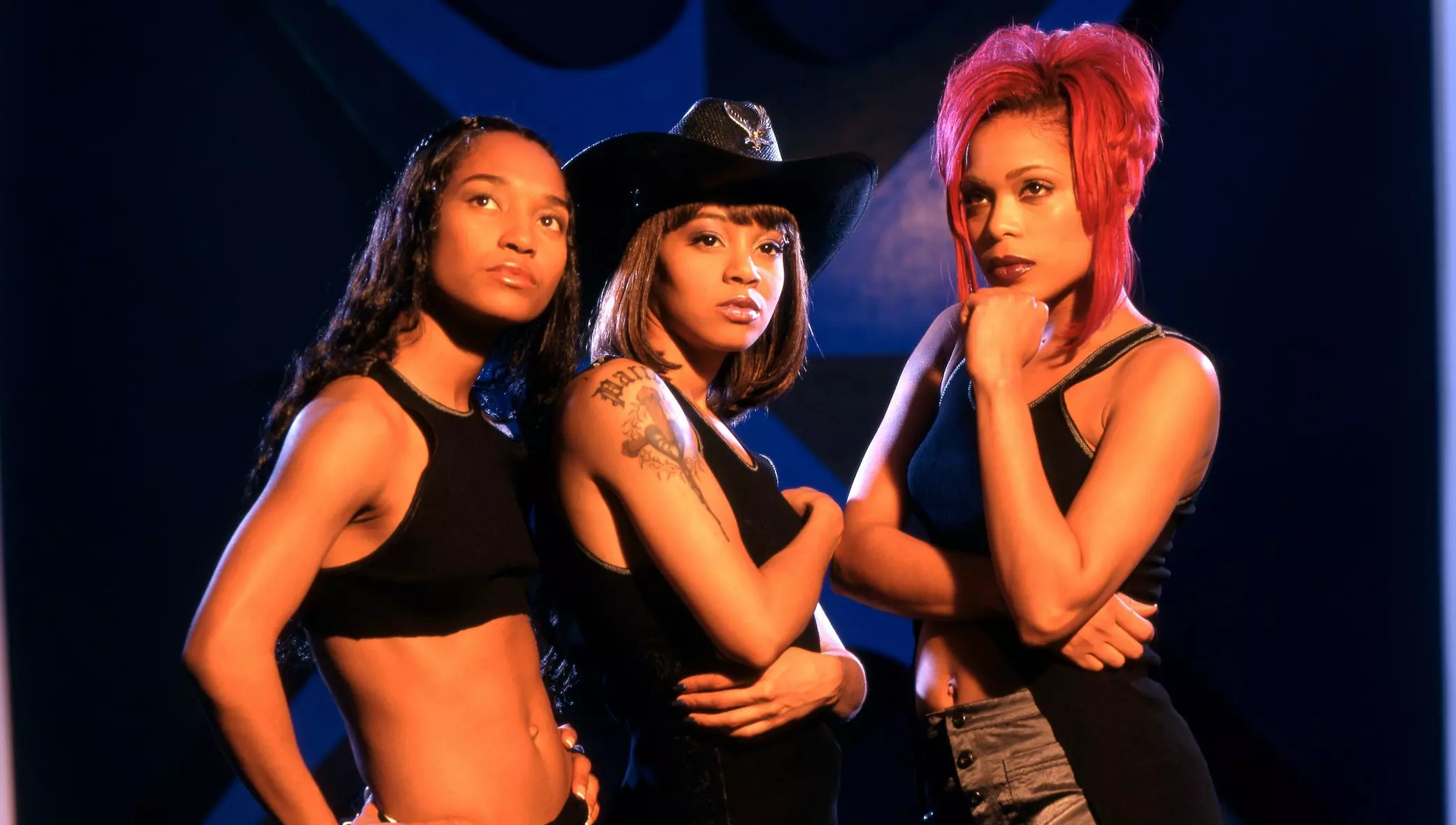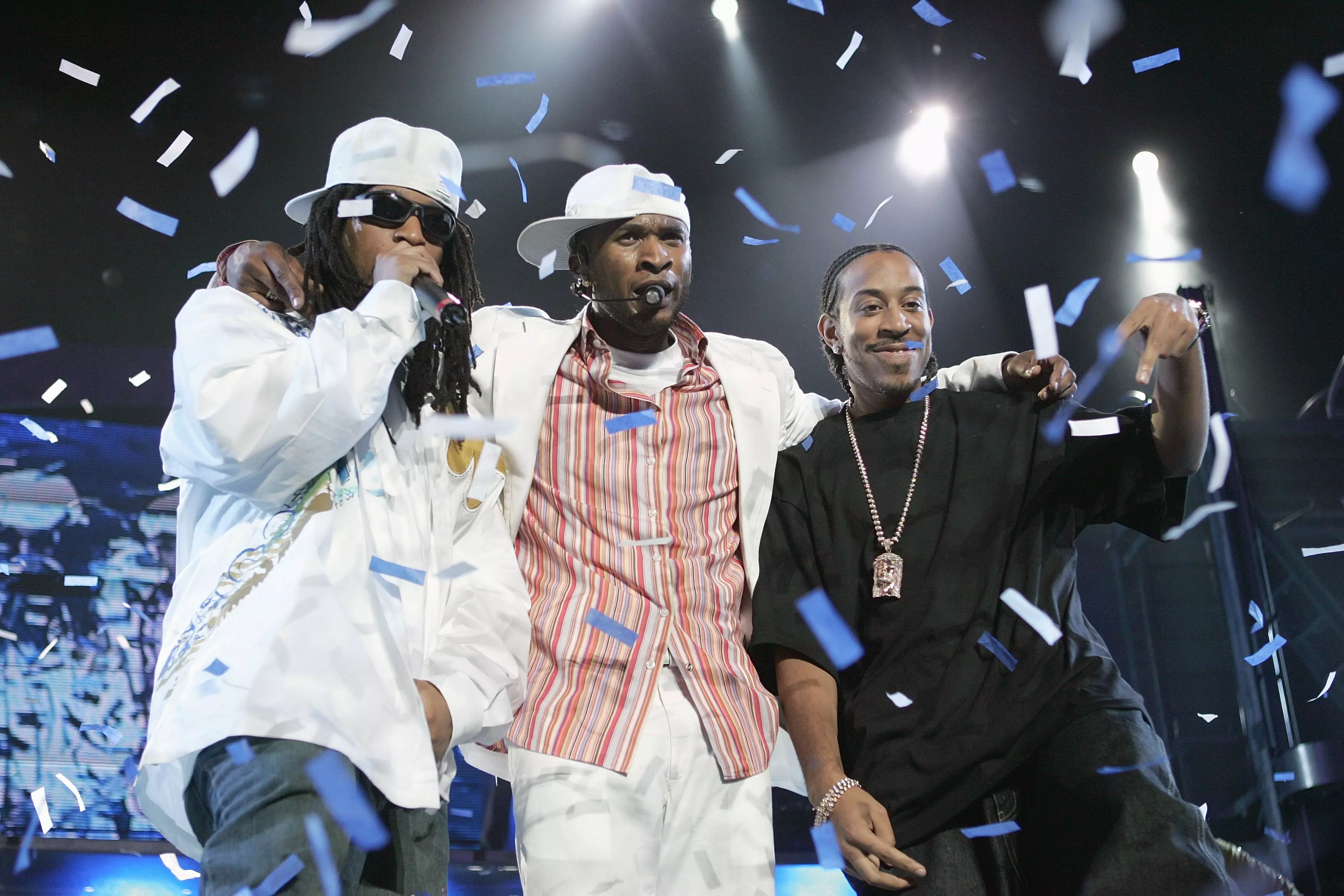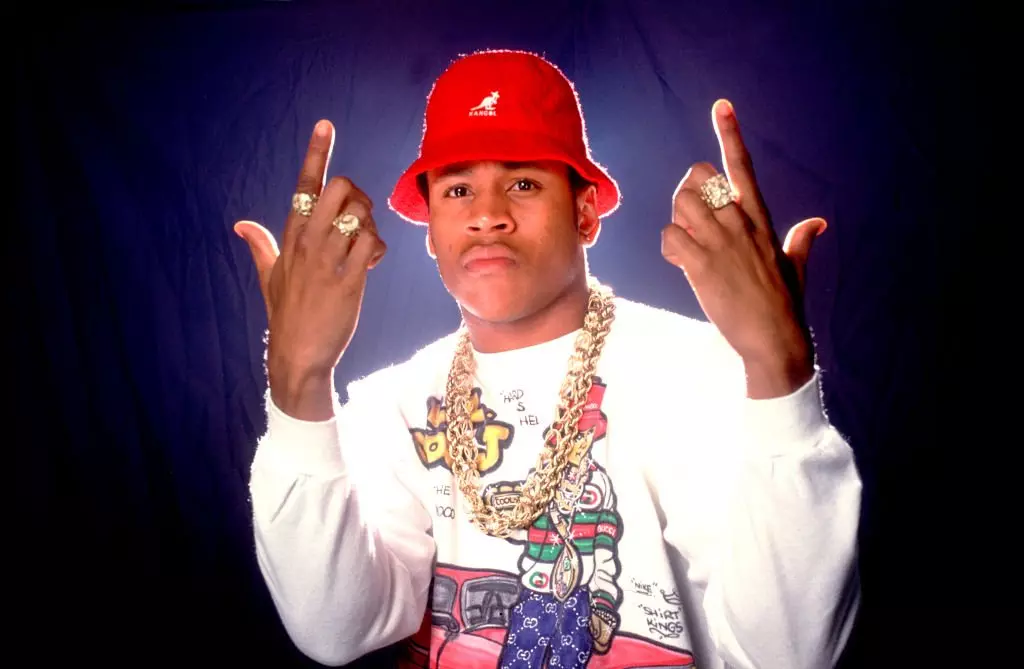Photo: Christian San Jose
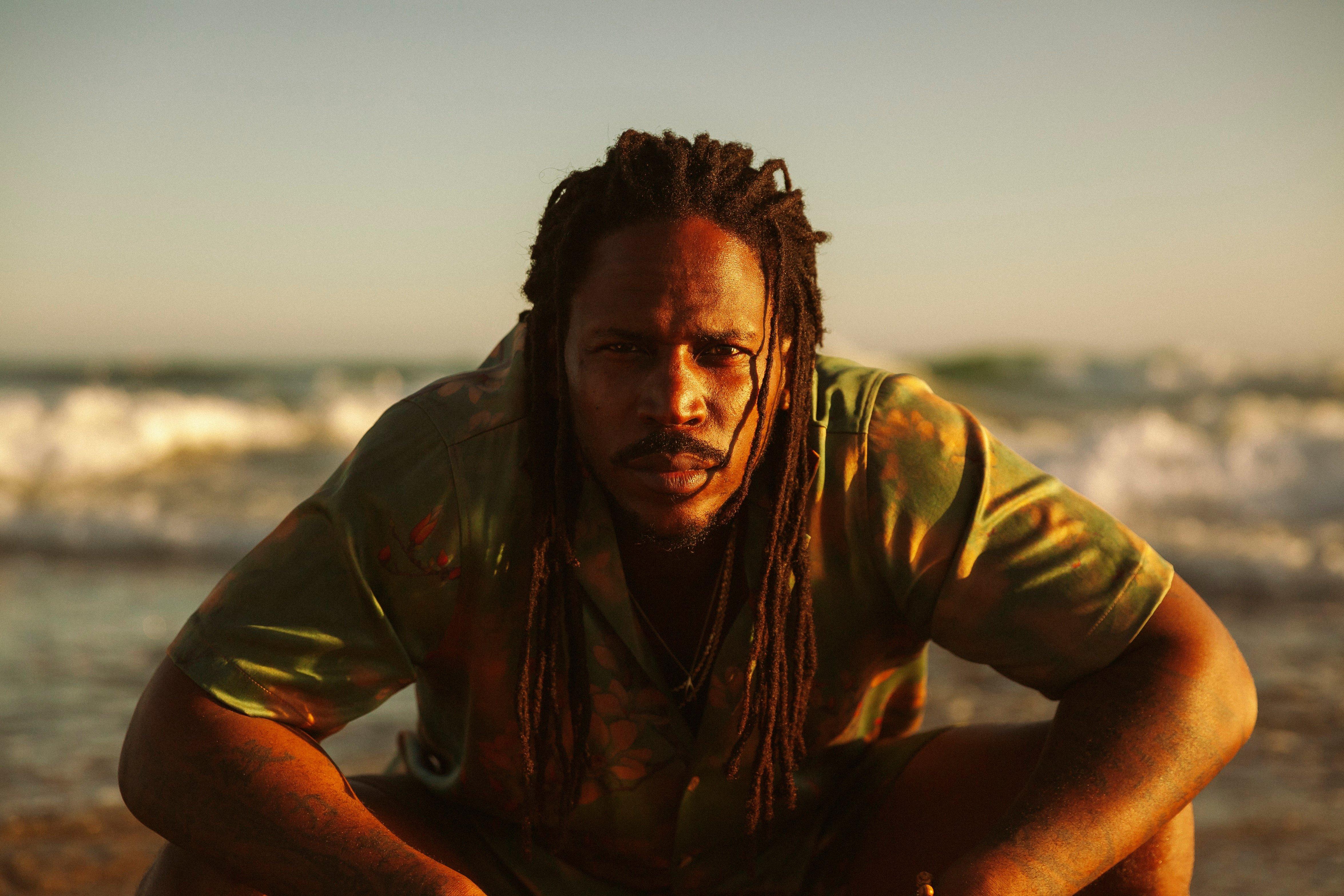
SiR
news
SiR Is 'Chasing Summer' And, With A Little Help From Kendrick Lamar & Others, Making His Dreams Reality
"It feels different, it feels evolved and it feels like a great direction. And I'm really proud of the work to say the least," the Inglewood singer/producer says of his vibey new album
You may have already jammed out to SiR's big 2019 summer mood single, "Hair Down," featuring the one and only Kendrick Lamar. If so, you already have a good starting place for understanding who the smooth R&B singer/producer, born Sir Darryl Farris, from Inglewood is. The vibey track is driven by SiR's warm, rich vocals over a slow-bubbling trap beat, elevated even further into the golden summer sunset by Lamar's verse. It's confident but laid-back—two words which also describe the artist himself well—a true slow-burn of a fire track.
"Hair Down" is the first track and the lead single to SiR's third album, Chasing Summer, which he dropped during Labor Day Weekend, on Aug. 30. It is his second LP released since he was signed to heavy-hitting Los Angeles label Top Dawg Entertainment. As he explains, it sets the tone for the rest of the album and also marks a major point of growth in his musical career and self-confidence.
<iframe width="620" height="349" src="https://www.youtube.com/embed/BQqEMLOOMCo" frameborder="0" allow="accelerometer; autoplay; encrypted-media; gyroscope; picture-in-picture" allowfullscreen></iframe>
"This time I was more direct about what I wanted, and I think that's huge. Your intentions when you go into things have to be put in the forefront if it's important. So this time around when I went into sessions, I was very vocal about exactly what I wanted, and the sessions went a lot better when I did that," he recently told the Recording Academy over the phone.
You recently dropped Chasing Summer, which is just such a perfect mood as summer comes to an end. What has the experience of this release felt like for you?
Man, it's one of a kind. Being the type musician I am, I'm very involved with each release, and this one feels different than the last two. Everybody around me was locked in, not just me. All the musicians and all of my team, my management had the common goals set almost a year ago, and just were building on this idea. So, it feels different, it feels evolved and it feels like a great direction. And I'm really proud of the work to say the least.
That's amazing, and I'm sure that's a really just great feeling to sort of be marinating in right now.
Yeah. It's awesome. It's definitely new territory for me. I'm just trying to keep up with myself now, which is fun.
"It's a very honest album, and I think that's a big reason why people gravitate towards it because I didn't really hold back this time around. I kind of made sure I was as honest as I could be and I think that's shining through for sure."
I love that. Can you speak to what your main vision for this album was?
The vision for the album is, it was all based off of my life on the road and all my experiences that I had accumulated over the last three or four years. With seeing my peers and just dealing with personal relationships, business relationships and trying to balance home and the road, and just my evolution as a human. I kind of put a lot of it into wax. It's a very honest album, and I think that's a big reason why people gravitate towards it because I didn't really hold back this time around. I kind of made sure I was as honest as I could be and I think that's shining through for sure.
I feel like it really does. I wanted to talk about the producers on the album. You worked with a handful of different people including Kal Banx and Sounwave from TDE as well as Boi-1da and a few others. How do you feel that working with these different creative minds helped challenge you and shape the trajectory of the album?
I'm going to answer this question, but I have a very specific thing about me that I really like. I work with people that want to work with me, so I don't chase beats; there's no rhyme or scheme. I didn't select certain people. I just put my head down and kept writing songs until we felt like we had a body of work. And then, what I do with most of my production is I'll get players to come in and add actual instrumentation to a good beat so that it has more life to it. I'm hands-on with all my mixes and masters. With all of the production, I was blessed to have really talented musicians around to help just elevate the sound, and I think that helps so much, man.
Working with cats like Boi-1da was an honor, of course, but I wouldn't hold him in higher regard than I would a Kal Banx, who damn near had six records on the album that he helped me produce and work on. So, I feel like everybody added their own sauce to it and it ended up being way bigger than I expected. But as far as like who produced what, I think that's not as important as the overall body of work, and we all knew that. With Kal, he wasn't worried when I told him I got a new base plate on the recipe. He didn't ask any questions, he just knew it was going to be saucy. You know what I mean?
I think, like I said, we all had a common goal. Once I laid out the plan and the vision for everybody, they were on board. So, we went into the every session with a specific goal in mind and we executed properly and I think it's going to pay off for all of us in the long run. I'm so excited for Kal. I'm excited to share this moment with him and see the response to his hard work, and it's all a blessing, really and truly.
<iframe width="620" height="349" src="https://www.youtube.com/embed/Bz2l2vit-_U" frameborder="0" allow="accelerometer; autoplay; encrypted-media; gyroscope; picture-in-picture" allowfullscreen></iframe>
It really seems like it was everything you would hope for in the studio, that everything is moving forward and flowing together, even with all the different people.
Yeah. I learned a lot from November and just how I kind of let a lot of people in the process in certain points where I didn't really necessarily mean to. This time I was more direct about what I wanted, and I think that's huge. Your intentions when you go into things have to be put in the forefront if it's important.
So this time around when I went into sessions, I was very vocal about exactly what I wanted, and the sessions went a lot better when I did that, and I think that helped give people an idea of what they should be doing when they come around. If you're a producer, I might not need you to make a whole beat, but I might need you to make these drums, or I might need you to play keys. Just be prepared to translate what I need, I'm not coming to you to get what you need. I produce myself, so I think this time around I was able to really fine-tune things the way I like, and it shows, man. This is my baby for sure. I feel like this is a very special project.
The album opens with "Hair Down," featuring Kendrick Lamar, which you also released as the lead single. Can you give a little bit of the backstory on that song and video and what it was like working with him?
That was probably the first song I wrote for the album that we were probably going use as a single. We usually don't try to shoot for singles, you know what I mean? When we're building a project, we'll make sure that the songs can all stand on their own two legs. As soon as I did that one, it just felt like what I wanted the album to look like, and to me it was the perfect starting point. It was the perfect launch point for what we were trying to accomplish, and I didn't get the [Lamar] verse until two months ago or something like that. I wrote that song probably a year ago while we were on the road at [TDE's 2018] Championship Tour.
That's not something you ask for. It was something that we talked about, but that's not something that you ask for. It's like the Jill Scott thing, I didn't really ask for that. You got to let them make that decision. I think with working with artists like Kendrick, Jill Scott and Lil Wayne, it's a blessing and I think I do everything I can to just make myself someone that people want to work with. I think I do a good job of standing on my own two feet, and that's something that I had to embrace over the last two years.
Just working with your idols is always awkward. It's weird. I met [Childish] Gambino at the BET awards. I wish I could take that back because it was so awkward, you know what I mean? And I still go through the everyday life stuff of I'm human and if I see somebody that I'm not used to seeing, it's going to be weird. This year, I had to really step outside of that and become SiR, and really accept that. I think it shined through when I sat and talked to people about the project, they were more open to it because I was more confident in myself, and that really helped a lot, just giving me that confidence. [Lamar's] conversations are more important to me than that verse ever will be. I'm appreciative of the verse for sure, but I can really say that's my mentor. This dude really takes care of his team and really cares about us, man. So, it's definitely a blessing to have him on deck.
<iframe width="620" height="349" src="https://www.youtube.com/embed/sxuffiwoiyU" frameborder="0" allow="accelerometer; autoplay; encrypted-media; gyroscope; picture-in-picture" allowfullscreen></iframe>
And what would you say the biggest thing you learned from the collaborators on this project?
Spread love. Because I feel like most of them, they didn't have to do what they did. Miss Jill, she's getting so much love on her acting career, as she should be. She really doesn't need to feature on anything. All of these artists, they got their own things. People are looking for them and checking for them.
When I get on, if I'm ever in a position to bless somebody, and I feel like they are working hard and they've got their thing together, I definitely would want to be what they are to me. I'd want to be a blessing and give back to the community. They see that I'm a part of the same community, I have the same common goal with music. It's not me trying to get on or be a flashy type. It's not that. I really care about the music. So, I think they saw that and they wanted to reciprocate the same kind of love I'm trying to get off it.
That's all it's really about, is spreading love and giving back to what you want to see thrive and flourish. And I think they really see something in what we got going, and I was just lucky. I really feel like it's the right place at the right time, but I don't want to make it that simple. But I feel like they really are just spreading love, man, and they blessed me. I'm still in shock. I can't really process it. It's all new territory for me. It's lovely though. I don't take it for granted.
More Interviews: GoldLink Talks Vision Behind 'Diaspora,' Tour With Tyler, The Creator, Musical Roots & More
How would you describe the L.A. music community now? From that explanation, it sounds very supportive and nurturing, but I'm interested in your perspective, whether it's just like that with TDE or just in your experience with who you've worked with.
L.A. is a weird place. It's very divided, with the people that are actually from L.A. to the people that come out here and claim L.A. The music industry's a weird place in general. I'm from L.A., so I definitely abide by the L.A. rules before I abide by the music industry rules. But when it comes to the music scene, there's a small community. What I'm learning is the further along I go in my career, the community gets smaller and smaller, and that's a great thing. You find people that are like-minded, and you got to let some friends go sometimes.
But for the most part, the goal is to find common ground that you can really build on. And I feel like I've found my community of people, from Mind Design to Kiefer to D.K. the Punisher to Kal Banx to all of my musician friends, The Catalyst, my band. My brothers, and just all of the musicians that I've been working with for the last 10 years, I still work with the same cats. L.A. is small, it's big, but at the time it's small, and I really want to keep it that way. I'd appreciate it if it stayed that way.
What does that summer mood look and sound like to you?
Well, summer mood has that sunset tint to it. It's like, to me, this album is best listened to riding down Malibu about six o'clock sunset. That's the vibe. I'm a Cali kid through and through, and I hope it translates through with the music. I think we hit it on the ball. If you want a glimpse at what summer's supposed to be, just take a listen to the album, close your eyes, and it should do the trick.
Stepping back, who are your biggest influences?
Oh man, Stevie Wonder, Donny Hathaway. These are people that my mother listened to when I was growing up. I grew up in the church, so I love Fred Hammond and Noel Jones. I don't know if you know who Noel Jones is, he's a preacher from L.A., his voice is so crazy. My mom sang background for Chaka Khan back in the day, and Michael Jackson. So, I grew up with an ear to R&B for sure, from the '60s, '70s, '80s. Of course I have hip-hop influences, but my spectrum is wide. We could have a 30 minute conversation about all the music I listen to, I promise you.
Lately, I've been listening to a lot of The Beatles. "Lucy In the Sky With Diamonds" has been on repeat for a couple of weeks, then Innervisions [Wonder's 1973 album]. I go back and forth between [Wonder's] Innervisions and Songs in the Key of Life. Then, my real guilty pleasure is John Mayer, I'm a huge fan.
<iframe width="620" height="349" src="https://www.youtube.com/embed/csVxhwb48l8" frameborder="0" allow="accelerometer; autoplay; encrypted-media; gyroscope; picture-in-picture" allowfullscreen></iframe>
I love it.
I think with music, and this is my advice to young people, it's like careers almost, you won't know what you want until you taste a few things. I think Gary Gee says that. You got to taste things to know what you want to be. I feel like music is like that too. You can't just listen to country music because you're from the South. You've got to listen to something else just to try it. You don't know, you might like classical music. If you never listen, you will never know.
I did a lot of that when I was younger and I found my vibes for sure. But I listened to some stuff that people probably wouldn't expect. But I think that helps to shape me as a musician in general. I definitely don't shy away from exploring and trying to find different vibes that I really like. One of the most fun parts about music to me, is exploring and finding new things that you never would expect you to enjoy, you know? So, yeah, my spectrum is wide, it's a rainbow for sure.
Growing up in a musical family, how do you feel like that impacted your journey to becoming an artist?
I can't really explain it because it's weird for me to be the artist in my family. I still wake up and kind of laugh because I never expected this. When I was younger, I didn't want to do music. When I was 14, my mom would make us sing in church every Sunday, and I got sick of it. That's when I kind of decided I didn't want to do music. I went on about my life, at about 19, 20 started working dumba** jobs and that turned into me wanting to find something that I was passionate about, and turns out it music was it all along. I had to step away to kind of find it for myself.
But I started really getting serious about music when I was 22, and then I ended up going to school, graduated in 2011 from film school, and just never looked back from there. I think that was what I needed was to really find it for myself, because my brothers' all sing or write songs, and my mother is still active in the industry, and they always said it was what we needed to be doing. I just had to see it for myself and I think that made me a better musician. My life experiences helped shape how I write songs. I appreciate my time away from music, but also I'm glad I found my way back because I don't know what I'd be if I wasn't a musician. I'd probably be—let's not even talk about that.
I'm blessed. My family is amazing. My brother is an amazing singer/songwriter. My older brother Daniel, he's an amazing rapper and he's the writer, and we're all supportive of each other. I know that I probably wouldn't be where I am today without the support of my family and them pushing me to be a better writer and a better musician.
You come back to where you're supposed to be at some point. You touched on it a little when you talked about your influences, but what advice do you have for younger people that have a passion for music but aren't really sure where to start to pursue music professionally?
Don't be afraid to be wack. Don't be afraid to fall on your a**. You got to start somewhere. But it's just like anything else in life, and I could preach this to the ends of the earth. It doesn't matter what you decide to do or when you decide to do it, but it's about staying dedicated to it and really working at what you want. If you want something then put it in the universe. Write it on a piece of paper, say it every day when you wake up and just don't worry about when it's going to happen. Just keep working.
I think that's the best thing I ever did for myself. I put my head down, I shut the f*** up and I worked for five years on music, and didn't try to release anything, didn't try to do anything. I got to the point where I was so ready to go that I had three projects worth of music ready to go, and we started with Seven Sundays and from there worked our way into being with TDE and all that.
I really developed my craft first and made sure I was confident in what I wanted to hear. So, I think for anybody that wants it, just don't be afraid to fail, and keep working at it. It's not easy, none of this is. But I feel like if you want something, you can just really work at it and it'll come. You just got to be willing to f***ing eat dirt and mud for a little bit. Eventually, hard work pays off, no matter what you do. If you want to sell ice cream, sell ice cream every day. Get up, get your cones right, make sure your freezer's at the right temperature, make sure your music's playing and hit the block and get on that ice cream.
<iframe width="620" height="349" src="https://www.youtube.com/embed/8qydraH-pbo" frameborder="0" allow="accelerometer; autoplay; encrypted-media; gyroscope; picture-in-picture" allowfullscreen></iframe>
Janet Jackson's Iconic 'Rhythm Nation 1814' Turns 30 Today & We Still Have Work To Do

Photo: Amy Lee
list
5 Rising L.A. Rappers To Know: Jayson Cash, 310babii & More
From San Diego to the Bay Area, Seattle and beyond, the West Coast bursts with talent. Los Angeles is at the heart of this expanse, and these five rappers are just a few who are showcasing the vibrant sounds of West Coast hip-hop.
GRAMMY winners Kendrick Lamar and Mustard have long repped their California roots. Earlier this summer, their powerhouse anthem "Not Like Us" brought West Coast rap back to its roots and shone a global spotlight on the scene.
Lamar and Mustard are at the forefront of a renaissance in West Coast rap. Their shared roots in Southern California cities — Mustard from Los Angeles and Kendrick from Compton — adds authenticity and resonance to their partnership. Their undeniable chemistry was on display in the video for "Not Like Us," which received a million views less than an hour after its release.
Mustard's signature beats and Lamar's profound lyricism has resurfaced the sound and culture that makes West Coast rap so unique and paved the way for a new generation of artists. All signs suggest that another impactful collaboration may appear on Mustard's upcoming album, Faith of A Mustard Seed.
Learn more: A Guide To Southern California Hip-Hop: Definitive Releases, Artists & Subgenres From L.A. & Beyond
Kendrick Lamar headlined the electrifying Pop Out concert on Juneteenth, which also featured sets from Mustard and DJ Hed. The event saw a handful of L.A. rappers, opening for Lamar in a showcase of the vibrant talent that defines the region's rap scene.
The West Coast is a vast reservoir of talent, stretching from the Bay Area to Seattle. At the heart of this creative expanse is Los Angeles, which brings fresh perspectives, innovative styles, and renewed energy to hip-hop, ensuring the genre thrives. With the stage set for these newcomers to shine, it's the perfect time to take a closer look at some of the rising talents poised to impact the rap scene. While this list only scratches the surface, it offers a glimpse into the diverse and exciting talent from SoCal, the epicenter of the West.
Blxst
Arising from Los Angeles, Blxst initially played the background as a producer but soon demonstrated his ability to excel across all facets of music creation. Blxst's breakout moment came with his platinum-certified single "Chosen," which solidified his place in the music industry. His collaboration on Kendrick Lamar's "Die Hard" from Mr. Morale And The Big Steppers further showcased his skill for crafting hooks that elevate tracks, resulting in two GRAMMY nominations.
As he prepares to release his debut album, I'll Always Come Find You on July 19, Blxst stands at a pivotal point in his career. With a great resume already to his name, his forthcoming album promises to showcase his undeniable talent and leave a lasting impact on the West Coast music scene.
Bino Rideaux
Bino Rideaux is a South Central native and frequent collaborator with the GRAMMY-winning rapper Nipsey Hussle. He is the only artist to have a joint project with Hussle, No Pressure, released before the prolific rapper's untimely death. Rideaux has hinted at having a treasure of unreleased music with Hussle, saved for the perfect moment and album.
Rideaux is known for creating tracks that get the city outside and dancing. He has made three beloved projects with Blxst, titled Sixtape, Sixtape 2, and Sixtape 3 resulting in sold-out shows and a special place in West Coast Rap fans' hearts. Endorsed by industry heavyweights like Young Thug, Rideaux continues to carve his path at his own pace. His journey is nothing short of a marathon, echoing the enduring legacy of his mentor.
Kalan.FrFr
Kalan.FrFr, whose name stands for "For Real For Real," is an artist whose music is as genuine as his name suggests. Growing up in Compton and Carson, Kalan.FrFr has always stayed true to his roots, and exudes the unyielding confidence essential to making it in the City of Angels.
His breakthrough mixtape, TwoFr, showcased his ability to shine without major features, delivering verses with catchy hooks and melodic rap. He's shown he's not confined to one sound, delivering vulnerable tracks like "Going Through Things'' and "Never Lose You." His EP Make the West Great Again, Kalan.FrFr both proves his loyalty to his origins and highlights his versatility. Kalan.FrFr's signature punch-in, no-writing-lyrics-down style keeps his fans on their toes, ensuring that whatever comes next is unpredictable but authentic.
Jayson Cash
Jayson Cash, a rapper hailing from Carson — the same city as TDE artist Ab-Soul — stays true to West Coast rap, from his lyrics to his beat selection. Listening to Jayson Cash's music is like diving into a vivid life narrative. His prowess as a lyricist and storyteller shines through in every verse. He gives his fans an insight into his journey, making it a relatable music experience.
Cash made waves with his debut mixtape, Read The Room, and scored a Mustard beat on the song "Top Down." Two years later, their collaboration continues, with Cash writing on Mustard's upcoming album. Though often seen as an underdog, Cash is not to be underestimated, earning cosigns from West Coast legends like Suga Free and Snoop Dogg. His latest project, Alright Bet, includes a notable feature from Dom Kennedy.
310babii
310babii has achieved platinum-selling status at just 18 years old, while successfully graduating high school. Yet 310babii's career began in seventh grade, when he recording songs on his phone showing early signs of motivation and creativity. His 2023 breakout hit "Soak City (Do It)" quickly gained traction on TikTok — and caught the ears of Travis Scott and NFL player CJ Stroud.
As the song grew in popularity, it led to a remix produced by Mustard, who invited the Inglewood native to join him onstage during his set at The Pop Out. 310babii's innovative spirit shines through in his distinctive visuals, exemplified by the captivating video for his song "Back It Up." His recent debut album, Nights and Weekends, released in February, underscores his evolving talent and promise within the music industry.
Latest News & Exclusive Videos

Behind Ryan Tedder's Hits: Stories From The Studio With OneRepublic, Beyoncé, Taylor Swift & More

Crowder Performs "Grave Robber"

NCT 127 Essential Songs: 15 Tracks You Need To Know From The K-Pop Juggernauts

5 Rising L.A. Rappers To Know: Jayson Cash, 310babii & More

Why Elliott Smith's 'Roman Candle' Is A Watershed For Lo-Fi Indie Folk
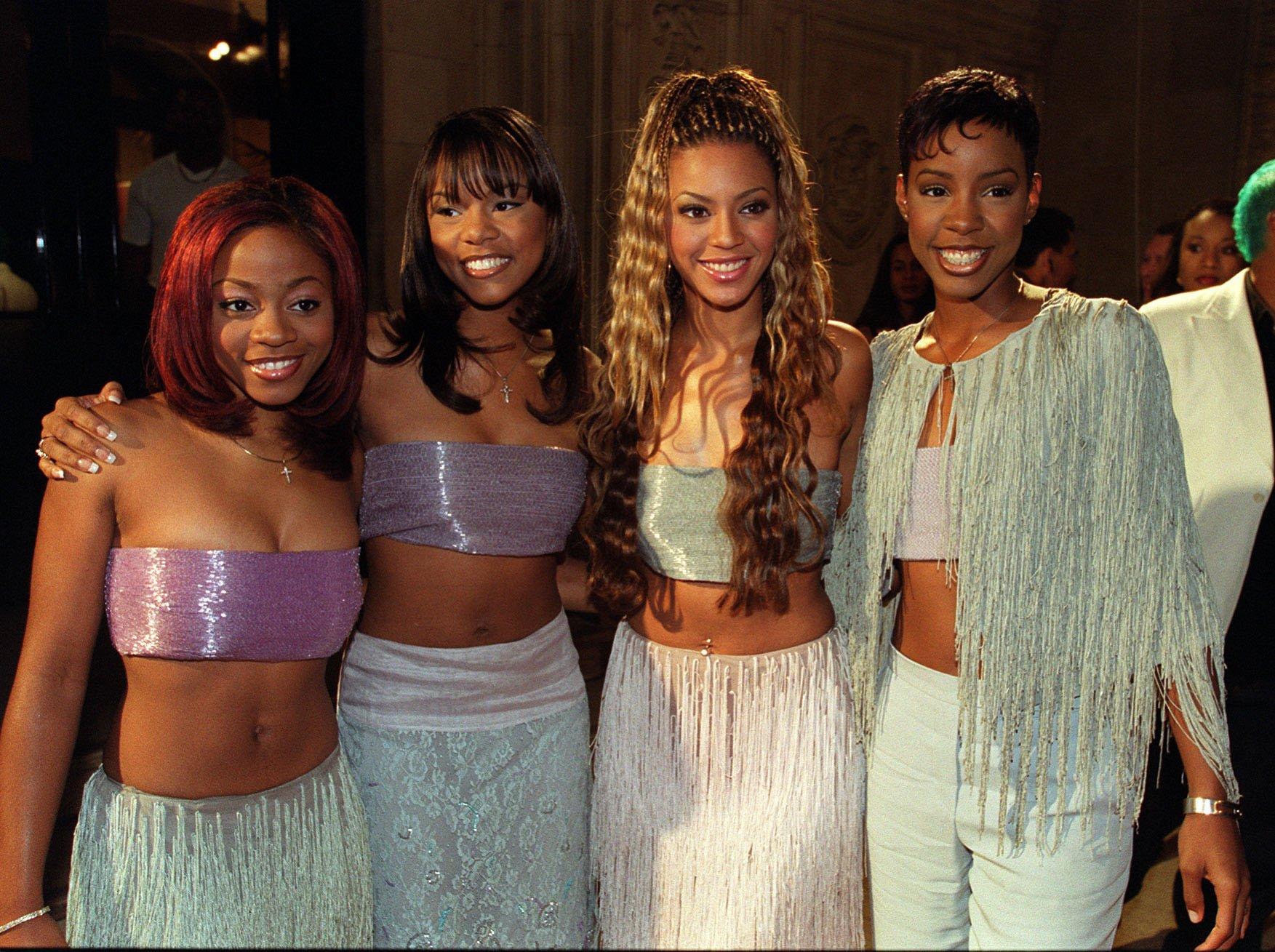
Photo: Michael Crabtree - PA Images/PA Images via Getty Images
list
5 Reasons Why 'The Writing's On The Wall' Is Destiny's Child's Defining Album
From its embrace of experimental R&B production and memorable music videos, to its GRAMMY-winning empowering songs, 'The Writing’s On the Wall' remains a touchstone for fans of Destiny's Child.
In 1997, all-female R&B groups were thriving: TLC already had seven Top 10 hits on the Billboard Hot 100, En Vogue had numerous platinum singles, and Xscape reached No. 1 more than once. Soon, a quartet of teenagers would burst upon the scene and leave an indelible impact.
While Destiny’s Child are now canonical in the world of '90s and early aughts R&B, the group initially experienced spotty success. Their 1997 debut single, "No, No, No (Part 2)" peaked at No. 3 on Billboard’s Hot 100 and was certified platinum. Yet their eponymous album, released in February 1998, only hit No. 67. Their follow up single, "With Me," also failed to set the charts ablaze.
Destiny’s Child's underwhelming chart performances could’ve easily derailed the budding group. Fortunately, the four ambitious girls from Texas had other plans.
Beyoncé Knowles, Kelly Rowland, LaTavia Roberson, and Le Toya Luckett were determined not to become one hit wonders, and quickly went back into the studio to record their sophomore album. Released on July 14, 1999, The Writing’s On the Wall became Destiny’s Child’s highest selling album and spawned some of their most iconic songs — one of which led to the group's first GRAMMY win. Not only did the album establish Destiny's Child as a household name, but it fine tuned the R&B girl group concept to perfection.
"We had no idea that The Writing's on the Wall would be as big a record as it was. Especially worldwide," Beyoncé said in a 2006 Guardian interview.
In celebration of the iconic album's 25th anniversary, read on for five reasons why The Writing’s On the Wall is the defining album of Destiny’s Child’s career.
Its Members Took Creative Control
On their debut album, Destiny’s Child tapped into the neo soul trend popularized by the likes of D’Angelo, Erykah Badu, and Maxwell — artists in their early-to-mid twenties with a maturity the teen quartet didn’t yet have. The references and creative direction clashed with the reality of the group members being so young.
"It was a neo-soul record and we were 15 years old. It was way too mature for us," Beyoncé tol the Guardian.
Heading back into the studio, the girls made sure to eradicate any misalignments and put more of themselves into their sophomore album. In an interview with MTV, the members said The Writing’s On the Wall had a fresher, more youthful vibe because "it comes from us." The quartet's fingerprints are all over the 16 track album: Each member co-wrote at least 50 percent of the album.
"Even at the time, Beyoncé would produce a lot of their background vocals, and she was a leader even at a young age," Xscape's Kandi Burruss said in a Vice interview, reflecting on her work as a songwriter and producer on The Writing's On the Wall. This heightened presence enabled the group to develop lyrics that boldly reflected their opinions and youthful energy. In turn, The Writing's On the Wall netted a run of iconic hit singles.
Read more: Destiny's Child's Debut Album At 25: How A Neo-Soul Album From Teens Spawned R&B Legends
It Pushed R&B Forward
Like its predecessor, The Writing’s On the Wall is very much an R&B album. However, Beyoncé's father Mathew Knowles — who still managed the group at the time — brought in producers who weren’t afraid to experiment. The result was a more commercial album that fused classic R&B with pop influences, creating a sound that was simultaneously contemporary and timeless.
Kevin "She'kspere" Briggs and Burrus (who would go on to co-write and produce TLC’s "No Scrubs") contributed to five of the album's tracks, shaping its overall sound and differentiating it from Destiny’s Child. The duo kept a few elements from the group’s debut effort, including the sing-rapping heard on "Bug A Boo" and "Hey Ladies." With syncopated beats, thumping basslines, and their knack for writing catchy hooks, Briggs and Burrus created R&B records with the perfect blend of chart-friendly accessibility.
On the Missy Elliott produced "Confessions," synthesizers, drum machines, and electronic garbling were layered to create a lush, futuristic backdrop. Further subverting the classic R&B ballad, Elliott paired what sounds like a cabasa to match Beyonce’s cadence throughout the verses which gives her laidback vocals an almost robotic feel. In addition to producing, Elliott’s velvety vocals also appear quite prominently on the chorus, adding to the track’s sonic tapestry.
GRAMMY-winner Rodney Jerkins was tapped to produce "Say My Name." The original beat Jerkins used was two-step garage, a subgenre of UK garage. No one else liked the sound, so he completely revamped the track into the GRAMMY-winning anthem we know today. Jerkins melded funk-inspired guitar and a call and response approach, then modernized them with a shimmery, polished production. This helped "Say My Name" become the group’s most listened to song on Spotify with over 840 million streams. Jerkins has even gone on record to say this is his favorite song he’s produced to date.
Read more: "Say My Name" 20 Years Later: Why The Destiny's Child Staple Is Still On Everyone's Lips
Its Music Videos Praised Black Culture
"For me, it is about amplifying the beauty in all of us," Beyoncé said in a 2019 interview with Elle when asked about the importance of representation. Even before her solo work, the importance of spotlighting Black culture was evident in Destiny's Child's music videos.
In "Bills, Bills, Bills," we see the group play the role of hair stylists in a salon which is an obvious nod to Beyoncé's mother’s longstanding relationship with all things hair. Near the end of "Bug a Boo," the members change into their version of majorette costumes and dance in front of a marching band. Majorettes and marching bands have a vibrant legacy within HBCUs; almost 20 years after this video premiered, Beyoncé revisited this very concept for her 2018 Coachella performance.
It Delivered Mainstream Success
The Writing’s On the Wall was a hit across the charts. The group earned their first No. 1 singles on Billboard’s Hot 100 with "Bills, Bills, Bills" and "Say My Name." Promotions for the latter also reinvigorated album sales and helped shift another 157,000 copies (an impressive 15 percent increase from their first-week sales). The fourth and final single, "Jumpin’, Jumpin’" was released during the summer of 2000 and became one of the most played songs on the radio that year.
Songs from the album were nominated at both the 42nd and 43rd GRAMMY Awards. Destiny’s Child took home their first golden gramophone at the 2001 GRAMMYs, winning Best R&B Performance by a Duo or Group with Vocals for "Say My Name." The single also won Best R&B Song and was nominated for Record Of The Year.
With 14 nominations, Destiny’s Child remain the most nominated girl group in GRAMMY history. With worldwide sales of 13 million, The Writing’s On the Wall is also the fourth best-selling girl group album of all time.
It Expanded The Concept Of "Girl Power"
The Writing’s On the Wall was much more than catchy, radio-friendly tunes. Lyrically and in production, the album reintroduced Destiny’s Child as the architects for their own lives. The tongue-in-cheek Godfather-inspired intro tees up each song with a commandment for their partners and, at times, for themselves.
Often misconstrued as a gold digger anthem,"Bills, Bills, Bills" empowers a woman to confront a lover who's financially taking advantage of her. This is a far cry from the theme of a young woman focused on finding love — a common theme on Destiny's Child — and puts their confidence on full display. "So Good" is a sassy, uplifting anthem which explicitly addresses haters with pointed lyrics like "For all the people ‘round us that have been negative/Look at us now/See how we live." Destiny's Child was sending a clear message: they’re going to be fine regardless of what others say.
And when the group became tabloid fodder due to unexpected lineup changes, "So Good" took on a new meaning for persevering through hard times. While there are some songs with morally questionable lyrics — we’re looking at you ‘"Confessions" — the consistent message of embracing one’s self-worth and independence is clear.
More Girl Group Sounds & History
.jpg)
Photo: Yoko Ono
list
5 Reasons John Lennon's 'Mind Games' Is Worth Another Shot
John Lennon's 1973 solo album 'Mind Games' never quite got its flowers, aside from its hit title track. A spectacular 2024 remix and expansion is bound to amend its so-so reputation.
As the train of Beatles remixes and expansions — solo or otherwise — chugs along, a fair question might come to mind: why John Lennon's Mind Games, and why now?
When you consider some agreed-upon classics — George Harrison's Living in the Material World, Ringo Starr's Ringo — it might seem like it skipped the line. Historically, fans and critics have rarely made much of Mind Games, mostly viewing it as an album-length shell for its totemic title track.
The 2020 best-of Lennon compilation Gimme Some Truth: The Ultimate Mixes featured "Mind Games," "Out the Blue," and "I Know (I Know)," which is about right — even in fanatical Lennon circles, few other Mind Games tracks get much shine. It's hard to imagine anyone reaching for it instead of Plastic Ono Band, or Imagine, or even the controversial, semi-outrageous Some Time in New York City.
Granted, these largely aren't A-tier Lennon songs — but still, the album's tepid reputation has little to do with the material. The original Mind Games mix is, to put it charitably, muddy — partly due to Lennon's insecurity about his voice, partly just due to that era of recordmaking.
The fourth-best Picasso is obviously still worth viewing. But not with an inch of grime on your glasses.
The Standard Deluxe Edition. Photo courtesy of Universal Music Group
That's all changed with Mind Games: The Ultimate Collection — a fairly gobsmacking makeover of the original album, out July 12. Turns out giving it this treatment was an excellent, long-overdue idea — and producer Sean Ono Lennon, remixers Rob Stevens, Sam Gannon and Paul Hicks were the best men for the job. Outtakes and deconstructed "Elemental" and "Elements" mixes round out the boxed set.
It's not that Mind Games: The Ultimate Collection reveals some sort of masterpiece. The album's still uneven; it was bashed out at New York's Record Plant in a week, and it shows. But that's been revealed to not be its downfall, but its intrinsic charm. As you sift through the expanded collection, consider these reasons you should give Mind Games another shot.
The Songs Are Better Than You Remember
Will deep cuts like "Intuition" or "Meat City" necessarily make your summer playlist? Your mileage may vary. However, a solid handful of songs you may have written off due to murky sonics are excellent Lennon.
With a proper mix, "Aisumasen (I'm Sorry)" absolutely soars — it's Lennon's slow-burning, Smokey Robinson-style mea culpa to Yoko Ono. "Bring On the Lucie (Freda Peeple)" has a rickety, communal "Give Peace a Chance" energy — and in some ways, it's a stronger song than that pacifist classic.
And on side 2, the mellow, ruminative "I Know (I Know)" and "You Are Here" sparkle — especially the almost Mazzy Star-like latter tune, with pedal steel guitarist "Sneaky" Pete Kleinow (of Flying Burrito Brothers fame) providing abundant atmosphere.
And, of course, the agreed-upon cuts are even better: "Mind Games" sounds more celestial than ever. And the gorgeous, cathartic "Out the Blue" — led by David Spinozza's classical-style playing, with his old pal Paul McCartney rubbing off on the melody — could and should lead any best-of list.
The Performances Are Killer
Part of the fun of Mind Games: The Ultimate Collection is realizing how great its performances are. They're not simply studio wrapping paper; they capture 1970s New York's finest session cats at full tilt.
Those were: Kleinow, Spinozza, keyboardist Ken Ascher, bassist Gordon Edwards, drummer Jim Keltner (sometimes along with Rick Marotta), saxophonist Michael Brecker, and backing vocalists Something Different.
All are blue-chip; the hand-in-glove rhythm section of Edwards and Keltner is especially captivating. (Just listen to Edwards' spectacular use of silence, as he funkily weaves through that title track.)
The hardcover book included in Mind Games: The Ultimate Collection is replete with the musicians' fly-on-the-wall stories from that week at the Record Plant.
"You can hear how much we're all enjoying playing together in those mixes," Keltner says in the book, praising Spinozza and Gordon. "If you're hearing John Lennon's voice in your headphones and the great Kenny Ascher playing John's chords on the keys, there's just no question of where you're going and how you're going to get there."
It Captures A Fascinating Moment In Time
"Mind Games to me was like an interim record between being a manic political lunatic to back to being a musician again," Lennon stated, according to the book. "It's a political album or an introspective album. Someone told me it was like Imagine with balls, which I liked a lot."
This creative transition reflects the upheaval in Lennon's life at the time. He no longer had Phil Spector to produce; Mind Games was his first self-production. He was struggling to stay in the country, while Nixon wanted him and his message firmly out.
Plus, Lennon recorded it a few months before his 18-month separation from Ono began — the mythologized "Lost Weekend" that was actually a creatively flourishing time. All of this gives the exhaustive Mind Games: The Ultimate Collection historical weight, on top of listening pleasure.
"[It's important to] get as complete a revealing of it as possible," Stevens, who handled the Raw Studio Mixes, tells GRAMMY.com. "Because nobody's going to be able to do it in 30 years."
John Lennon and Yoko Ono in Central Park, 1973. Photo: Bob Gruen
Moments Of Inspired Weirdness Abound
Four seconds of silence titled the "Nutopian International Anthem." A messy slab of blues rock with refrains of "Fingerlickin', chicken-pickin'" and "Chickin-suckin', mother-truckin'." The country-fried "Tight A$," basically one long double entendre.
To put it simply, you can't find such heavy concentrates of Lennonesque nuttiness on more commercial works like Imagine. Sometimes the outliers get under your skin just the same.
It's Never Sounded Better
"It's a little harsh, a little compressed," Stevens says of the original 1973 mix. "The sound's a little bit off-putting, so maybe you dismiss listening to it, in a different head. Which is why the record might not have gotten its due back then."
As such, in 2024 it's revelatory to hear Edwards' basslines so plump, Keltner's kick so defined, Ascher's lines so crystalline. When Spinozza rips into that "Aisumasen" solo, it absolutely penetrates. And, as always with these Lennon remixes, the man's voice is prioritized, and placed front and center. It doesn't dispose of the effects Lennon insecurely desired; it clarifies them.
"I get so enthusiastic," Ascher says about listening to Mind Games: The Ultimate Collection. "I say, 'Well, that could have been a hit. This could have been a hit. No, this one could have been a hit, this one." Yes is the answer.
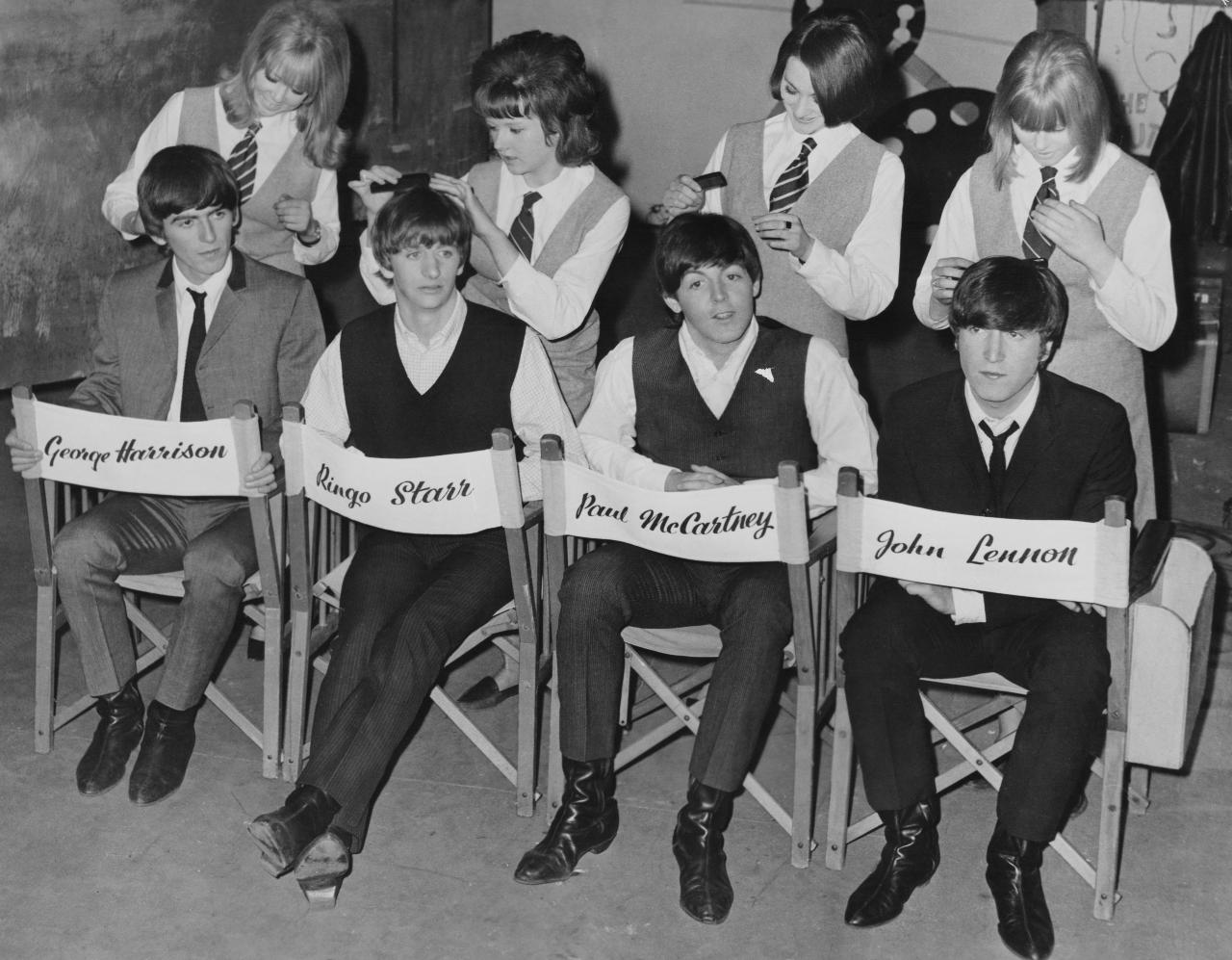
Photo: Archive Photos/Getty Images
list
'A Hard Day's Night' Turns 60: 6 Things You Can Thank The Beatles Film & Soundtrack For
This week in 1964, the Beatles changed the world with their iconic debut film, and its fresh, exuberant soundtrack. If you like music videos, folk-rock and the song "Layla," thank 'A Hard Day's Night.'
Throughout his ongoing Got Back tour, Paul McCartney has reliably opened with "Can't Buy Me Love."
It's not the Beatles' deepest song, nor their most beloved hit — though a hit it was. But its zippy, rollicking exuberance still shines brightly; like the rest of the oldies on his setlist, the 82-year-old launches into it in its original key. For two minutes and change, we're plunged back into 1964 — and all the humor, melody, friendship and fun the Beatles bestowed with A Hard Day's Night.
This week in 1964 — at the zenith of Beatlemania, after their seismic appearance on "The Ed Sullivan Show" — the planet received Richard Lester's silly, surreal and innovative film of that name. Days after, its classic soundtrack dropped — a volley of uber-catchy bangers and philosophical ballads, and the only Beatles LP to solely feature Lennon-McCartney songs.
As with almost everything Beatles, the impact of the film and album have been etched in stone. But considering the breadth of pop culture history in its wake, Fab disciples can always use a reminder. Here are six things that wouldn't be the same without A Hard Day's Night.
All Music Videos, Forever
Right from that starting gun of an opening chord, A Hard Day's Night's camerawork alone — black and white, inspired by French New Wave and British kitchen sink dramas — pioneers everything from British spy thrillers to "The Monkees."
Across the film's 87 minutes, you're viscerally dragged into the action; you tumble through the cityscapes right along with John, Paul, George, and Ringo. Not to mention the entire music video revolution; techniques we think of as stock were brand-new here.
According to Roger Ebert: "Today when we watch TV and see quick cutting, hand-held cameras, interviews conducted on the run with moving targets, quickly intercut snatches of dialogue, music under documentary action and all the other trademarks of the modern style, we are looking at the children of A Hard Day's Night."
Emergent Folk-Rock
George Harrison's 12-string Rickenbacker didn't just lend itself to a jangly undercurrent on the A Hard Day's Night songs; the shots of Harrison playing it galvanized Roger McGuinn to pick up the futuristic instrument — and via the Byrds, give the folk canon a welcome jolt of electricity.
Entire reams of alternative rock, post-punk, power pop, indie rock, and more would follow — and if any of those mean anything to you, partly thank Lester for casting a spotlight on that Rick.
The Ultimate Love Triangle Jam
From the Byrds' "Triad" to Leonard Cohen's "Famous Blue Raincoat," music history is replete with odes to love triangles.
But none are as desperate, as mannish, as garment-rending, as Derek and the Dominoes' "Layla," where Eric Clapton lays bare his affections for his friend Harrison's wife, Pattie Boyd. Where did Harrison meet her? Why, on the set of A Hard Day's Night, where she was cast as a schoolgirl.
Debates, Debates, Debates
Say, what is that famous, clamorous opening chord of A Hard Day's Night's title track? Turns out YouTube's still trying to suss that one out.
"It is F with a G on top, but you'll have to ask Paul about the bass note to get the proper story," Harrison told an online chat in 2001 — the last year of his life.
A Certain Strain Of Loopy Humor
No wonder Harrison got in with Monty Python later in life: the effortlessly witty lads were born to play these roles — mostly a tumble of non sequiturs, one-liners and daffy retorts. (They were all brought up on the Goons, after all.) When A Hard Day's Night codified their Liverpudlian slant on everything, everyone from the Pythons to Tim and Eric received their blueprint.
The Legitimacy Of The Rock Flick
What did rock 'n' roll contribute to the film canon before the Beatles? A stream of lightweight Elvis flicks? Granted, the Beatles would churn out a few headscratchers in its wake — Magical Mystery Tour, anyone? — but A Hard Day's Night remains a game-changer for guitar boys on screen.
The best part? The Beatles would go on to change the game again, and again, and again, in so many ways. Don't say they didn't warn you — as you revisit the iconic A Hard Day's Night.
Explore The World Of The Beatles
.webp)
5 Reasons John Lennon's 'Mind Games' Is Worth Another Shot

'A Hard Day's Night' Turns 60: 6 Things You Can Thank The Beatles Film & Soundtrack For
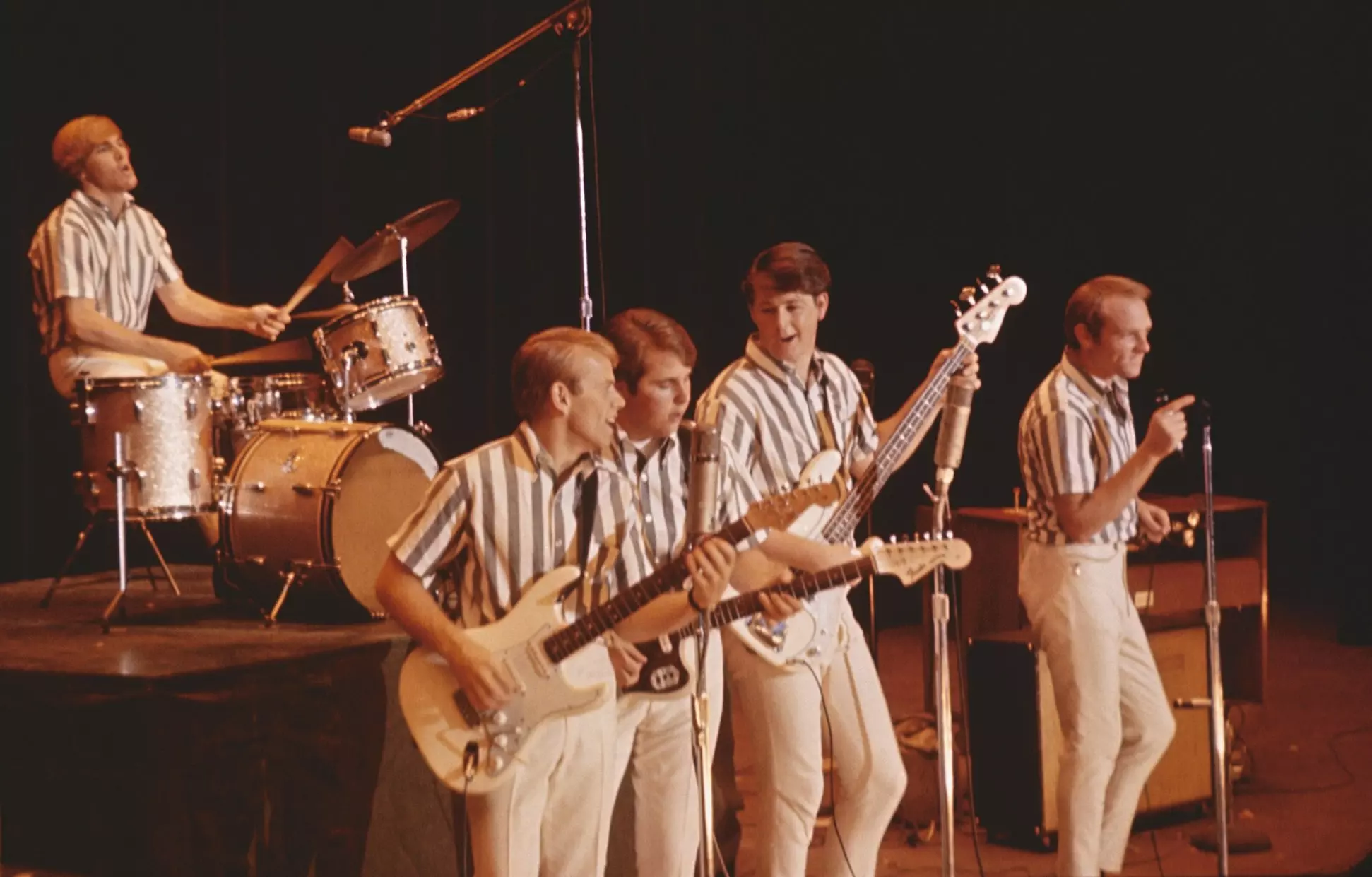
6 Things We Learned From Disney+'s 'The Beach Boys' Documentary

5 Lesser Known Facts About The Beatles' 'Let It Be' Era: Watch The Restored 1970 Film
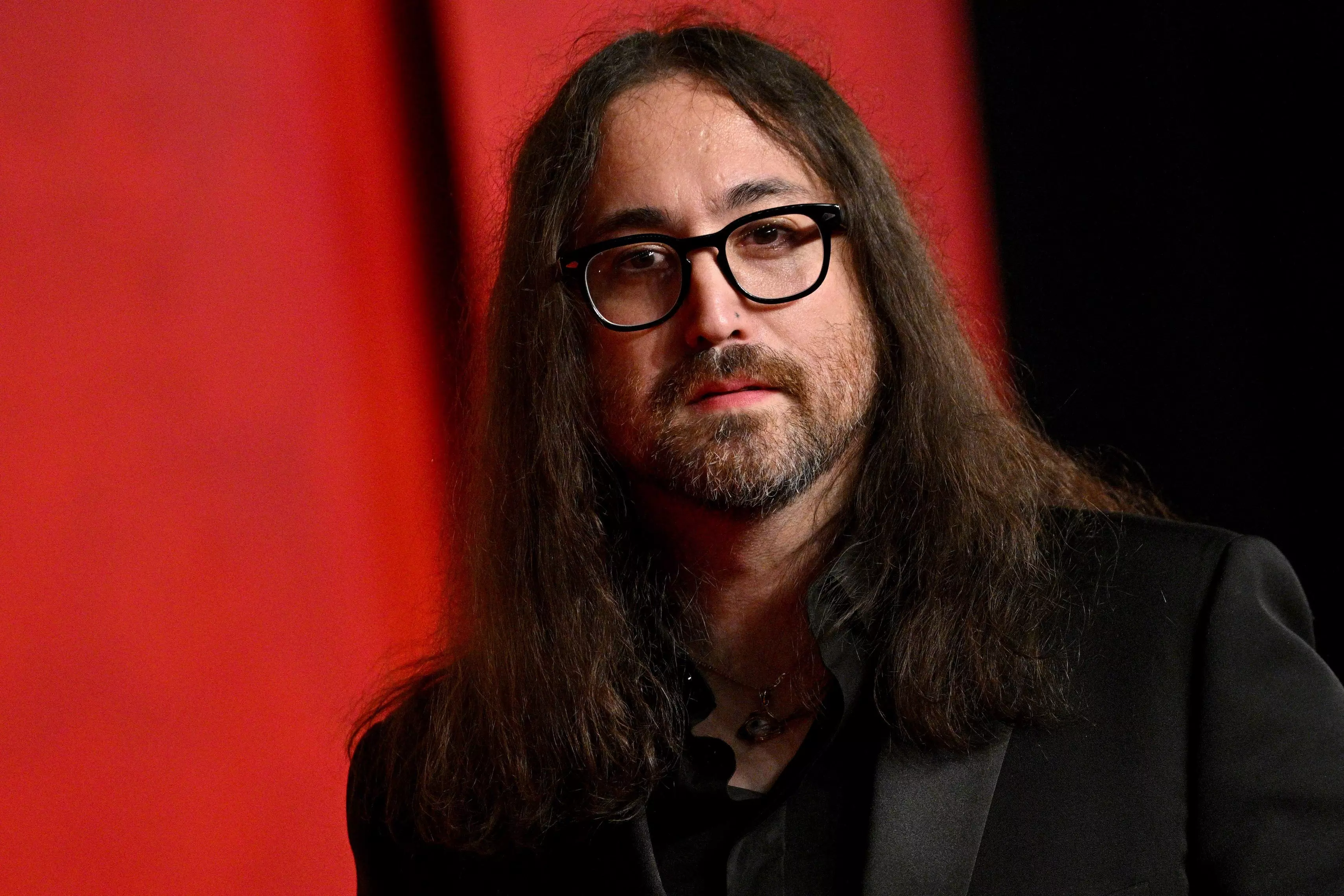
Catching Up With Sean Ono Lennon: His New Album 'Asterisms,' 'War Is Over!' Short & Shouting Out Yoko At The Oscars

